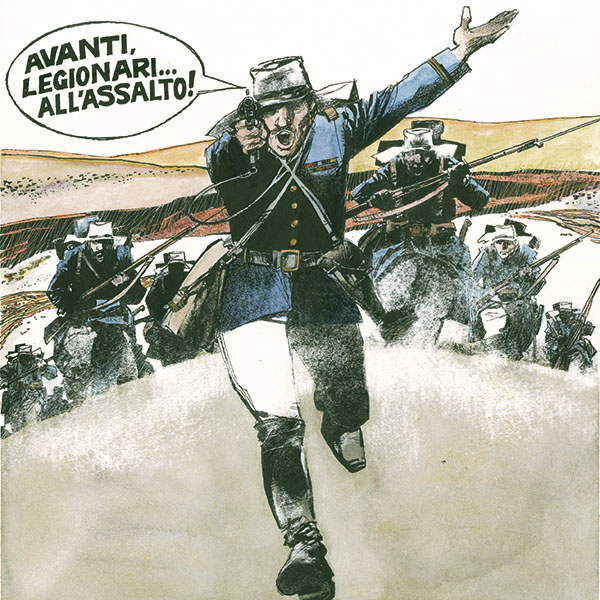
by Pier Paolo Putignano and Pier Luigi Gaspa
One hundred years after his birth and forty years after his death, Lucca Comics & Games chooses to celebrate one of the absolute masters of comics, the Venetian artist Dino Battaglia, with an exhibition set up in the Chiesa dei Servi, realised thanks to the precious collaboration of Pietro Alligo, Lo Scarabeo Editions and Giuseppe Battaglia. As this exhibition testifies, divided into the fundamental macro-themes - adventure and war, the religious, the fantastic-metaphysical-scientific, the fabulous - Battaglia's drawings (which at a certain point are served in the most appropriate manner by his wife Laura's colours) are juxtaposed with the most disparate events and characters, be it Gustav Meyrink's Golem, Edgar Allan Poe's tales of horror and mystery, Howard Phillips Lovecraft's eerie fantasies or the life of St Francis or other religious figures from the Christian tradition. Images characterised by his ethereal, disturbing or delicate and suffused strokes, ideal for conveying messages of peace and brotherhood. A 'sooty' stroke that makes his work always new to discover, study and admire.
As recounted in the Exhibition Artbook, it was the appearance of the monthly magazine Linus on newsstands - in 1965, even before Sgt. Kirk - that provided the Venetian cartoonist with the ideal support on a silver platter to make a deeper and more continuous break with his previous works. To take the plunge, in a certain sense, and begin a new and extraordinary comics career in which he can pour all of himself. And it is no coincidence, either, that it is precisely in the magazine founded by Giovanni Gandini that he presents some of his most significant works, which inevitably delve into the fantastic, the magical, the uncanny and the mysterious. In particular, Battaglia approaches the writer who has perhaps most masterfully interpreted the moods and tendencies of the previous century, Edgar Allan Poe, one of the great fathers of the fantasy and author of celebrated works, including The Fall of the House of Usher, Ligeia and The Masque of the Red Death. Their citation is not accidental since they were all presented in comic strips in Linus, along with several others, not only by Poe but by writers whose atmospheres are not unlike those that are typical and congenial to him, such as E.T.A. Hoffmann, to name but one. Battaglia explores, vivisects and recomposes these tales using a very personal, inimitable and suffused stroke and technique, qualitatively always at the apex of virtuosity, 'cultured', in the true sense of the term. A 'spongy' technique that fills his cartoons with ethereal environments, indefinable and for this reason disturbing to the reader's gaze, ideal for visually rendering the American writer's texts, his bizarre and hallucinated characters, his impalpable, almost incorporeal women, and certainly unreachable in their immateriality and detachment.
Venue: Chiesa dei Servi – Lucca


